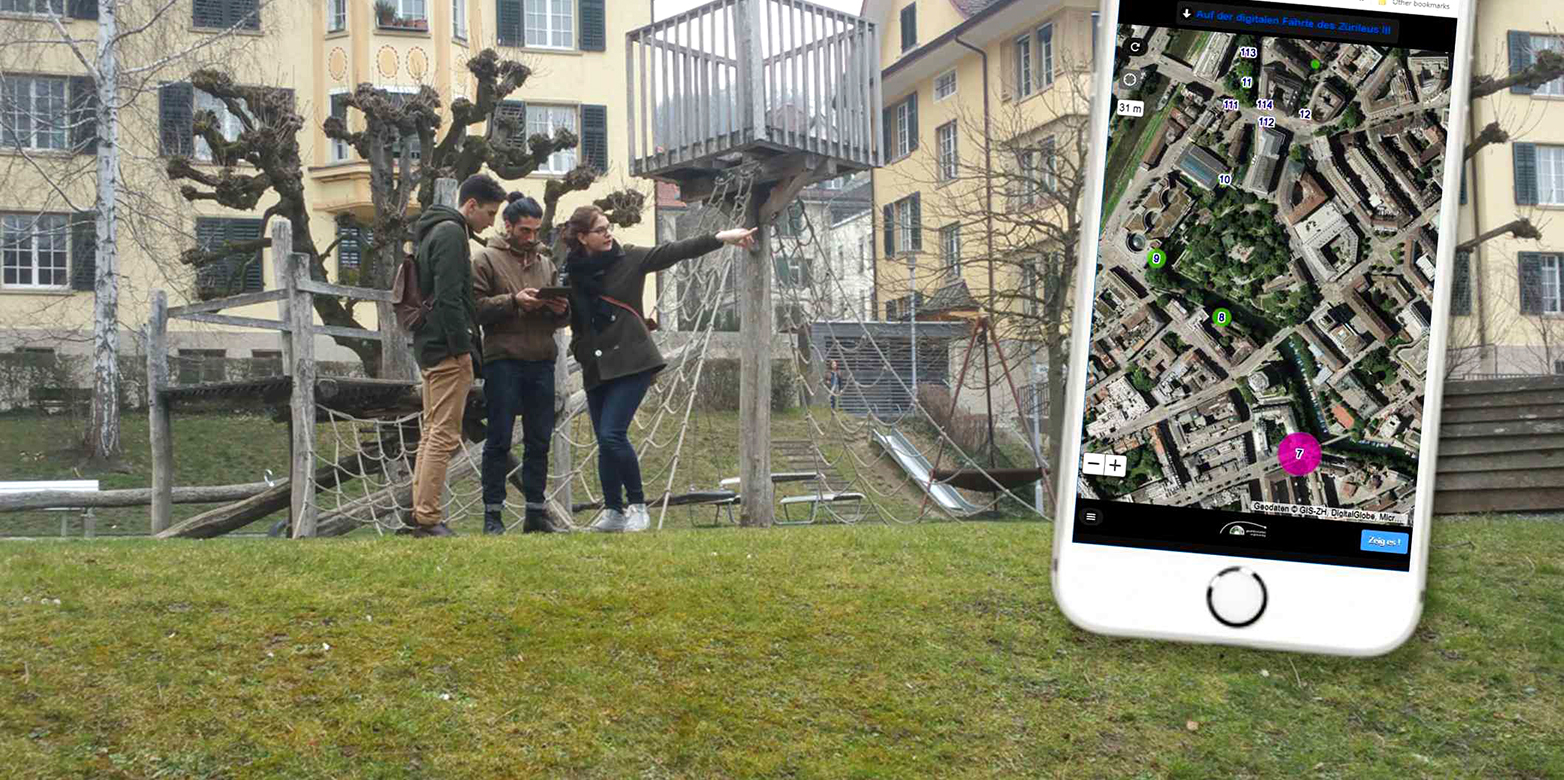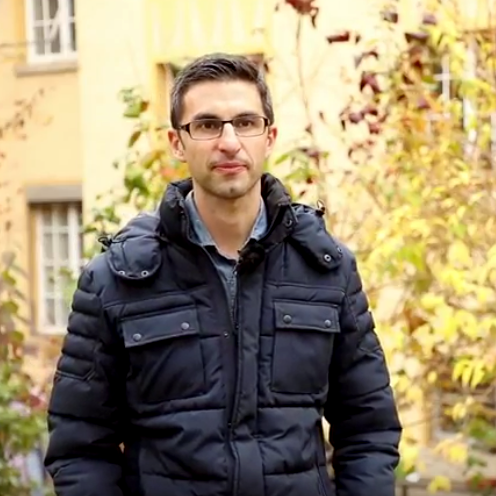Out of the lecture hall
The Omleth platform helps lecturers to plan and implement outdoor learning courses. It is one of 25 projects to be presented at the first Learning and Teaching Fair at ETH Zurich.

What characterises a city or a neighbourhood? Definitely the buildings, and their shape and arrangement, but also the roads and paths for traffic and the green areas between them. And then of course the residents and visitors, the level of noise, the smells – and a lot more. Some of these characteristics can be captured in plans, photos or videos, but the only way to get a real sense of a place is to be there. Then we can experience a neighbourhood or street corner with all of our senses.
Platform for outdoor courses
On the basis of these kinds of considerations, Christian Sailer is a proponent of holding classes outdoors: “Context plays a major role in the episodic memory of someone learning because seeing, listening and smelling activate different centres in our brain”, explains the doctoral candidate at the Institute of Cartography and Geoinformation. As part of his dissertation for Professor Martin Raubal, he developed the Omleth platform, which is designed to support lecturers in the planning and implementation of outdoor learning courses. The name stands for the German phrase meaning “location-related, mobile learning at ETH” (ortsbezogenes, mobiles Lernen an der ETH).

“Omleth is basically a browser-based, geographic information system (GIS),” explains Sailer. “Lecturers can set the locations that they want the students to visit using the Parcours Creator and – like what we know from learning platforms such as Moodle – store material for each of them: text, images, sound files or videos.” The students can themselves open the application via the Parcours Player, visit the individual locations and solve the exercises set up for them. That may involve answering a multiple-choice question, writing a short text or sending an image or video.
Interaction with students
“The special thing about Omleth is that lecturers can interact with students on demand,” emphasised Sailer. They have the option of following the students on interactive maps in real time, and can write to them directly using the embedded communication app. Or they can analyse the course afterwards. “That way they can gain insights about how many students solved the exercises, what was difficult for them, and what aspects it would make sense to explore more in the next lesson”, explains Sailer. The students themselves can go back and retrace their tracks, and access the exercises to review.
Omleth was used for the first time in 2014, its first year of development, by Harald Stühlinger in a course on the history of urban development. After this first test, Sailer focused on developing the platform further. He has so far found little interest for his project at ETH, but elsewhere already over 100 courses have been realised using Omleth, especially at the secondary education levels I and II, where the platform has been met with great enthusiasm.
Users wanted
Sailer is presenting his teaching aid at the first Learning and Teaching Fair at ETH Zurich on 14 November to motivate ETH lecturers to integrate group excursions into their courses as well. He would like to reach not only architects and civil engineers, but also environmental scientists and many other lecturers who could offer their students an added value by going on excursions.
Learning and Teaching Fair
Omleth is one of 25 projects to be presented at the first Learning and Teaching Fair at ETH Zurich on 14 November. On this occasion, which has its origins at the annual Innovedum meeting, the Department of the Rector intends to offer lecturers a platform to try out innovative teaching approaches and share opinions about their effectiveness. As different as the curricula are – 13 departments are involved – the projects being presented are just as diverse: they range from lectures on coffee to the use of augmented reality glasses. In addition, the Learning and Teaching Fair offers an opportunity to share ideas with project leaders, members of the teaching committee, the teaching specialists for the departments, students – and also with other lecturers.
Keynote: Digital Technology in Education: A Toolbox, not a Magic Lamp - Jörn Loviscach, Professor of Technical Mathematics and Computer Engineering at the Bielefeld University of Applied Sciences
Learning and Teaching Fair, 14 November 2018, 4 p.m., ETH Zurich, Main Building. Further information
